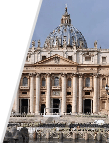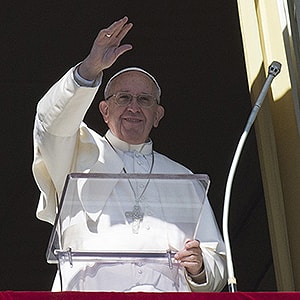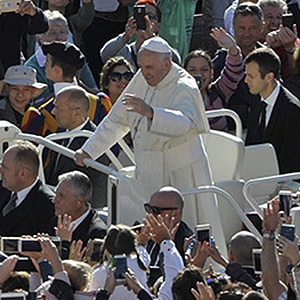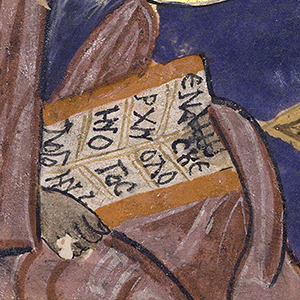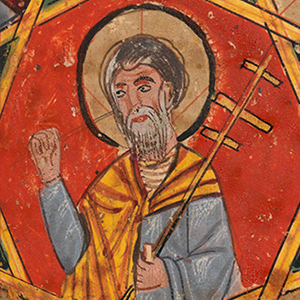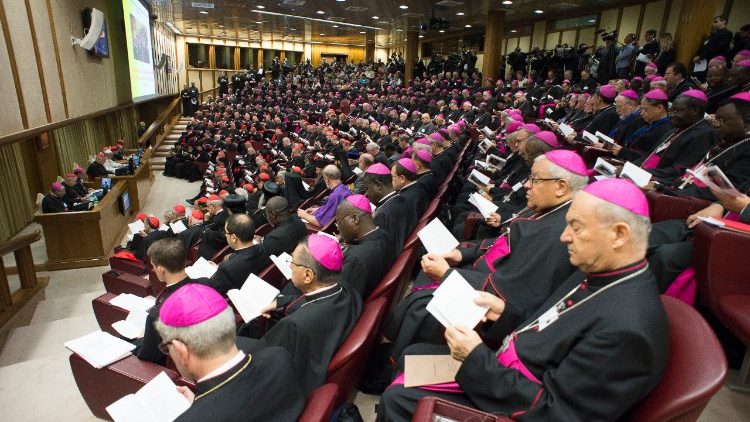
What is the history of the Synod of Bishops?
“New as an institution but ancient in its inspiration”. That’s how Pope Francis described the Synod of Bishops in the Apostolic Constitution Episcopalis communio, published on 15 September 2018, just a few weeks before the Synod on Young People, Faith and Vocational Discernment.
A people on the way
So, just what was the Pope referring to? Let’s start with the word itself.
The word “synod” has deep roots within the Church’s tradition. It is a two-part Greek word: συν (with) and όδός (path). Putting the two together, the meaning of walking together along the way is conveyed. Jesus often taught His disciples as they walked “on the way”. This concept was so deeply rooted in the first Christians, that they became known as “followers of the Way”.
Two disciples on the way
The story of the disciples on the way to Emmaus is a good example of how the disciples of Jesus understood how He continued walking with them. We all know the story. Two disciples are grieving over the death of the person they thought was the Messiah. They are so let down that they turn their backs on the community of disciples in Jerusalem. They go their own way. The Risen Lord Himself begins to accompany them. He asks them to tell their story, to reveal their sadness and disillusionment to Him. Then Jesus breaks open the Word of God for them, explaining “to them what was said in all the Scriptures concerning himself”. Later, when the trio were eating dinner together, Jesus “took bread, gave thanks, broke it and began to give it to them”. That’s when the disciples knew who had been accompanying them “on the way” (Luke 24:13-35).
The Church in Jerusalem on the way
What happened with these two disciples began to repeat itself whenever the followers of the Lord needed guidance on which way to take. When the early Church had to decide whether pagan converts had to be circumcised prior to being baptized, the “apostles and presbyters”, (the leaders of the Christian community), gathered to debate the matter. This time, it is was Peter and James who reminded their brothers about what God had revealed about the inclusion of the gentiles in His plan of salvation. Together, they came to a decision, they found the way (Acts 15:1-35).
The Church of the first millennium on the way
As we have seen, “synodality appears from the start as the guarantee and incarnation of the Church’s fidelity to her apostolic origins and her Catholic calling” (Synodality in the Life and Mission of the Church, no. 24). This understanding continued to develop as the Church entered a period in which no one had experienced the earthly presence of the Lord. In the second century, Ignatius of Antioch called his fellow Christians “companions on the journey”. Several Church Fathers attest to the fact that the Church was already aware that these “companions on the journey” were most closely bound together when they gathered around their local bishop for
As the number of Christians multiplied after Christianity was legalized in the early 4th century, the Church was organized under the authority of bishops for the purpose of fostering communion. This organization mimicked that of the Roman empire. Because of the presence of the apostles connected with the founding of the Church in some cities, several dioceses were recognized as having “pre-eminence”: Rome, Alexandria, Antioch, Constantinople and Jerusalem. The primacy of the Church of Rome is an essential component of the organization of the Western Church. the Eucharistic celebration to be nourished on the Bread of God’s Word and the Eucharistic Bread.
Church Synods and Councils guiding the way
Church synods were introduced as the forum in which cases could be resolved that a local bishop was not competent to handle. These synods were either provincial (presided over by the local bishop), metropolitan (presided over by the metropolitan bishop) or patriarchal (presided over by the patriarch). The Canons of the Apostles, a text dating to the 4th and 5th centuries, states that the local bishop should do nothing “significant” without the agreement of the bishop who was his superior, and that the superior bishop should not do anything “without the consensus of all”.
But there were soon issues that concerned the entire Church. Thus, the first Ecumenical Council was convened in Nicea in 325. This Council “was the first institutional expression, on the universal level of the έξουσία [power or authority] of the risen Lord guiding and directing the way forward for the People of God in the Holy Spirit” (Synodality in the Life and Mission of the Church, no. 29). Ecumenical Councils were held throughout the first millennium.
The Church of the second millennium on the way
Permanent synods held and continue to hold an important role in the life of the Eastern Churches. A synod functioned in Rome from the 5th century and eventually developed into the councils held in the Western Church during the Middle Ages. One of these Councils resolved the Western Schism (the Council of Konstanz) and another was convoked in response to the Protestant Reformation (Council of Trent). In order to implement the Council of Trent throughout the Church, the Council mandated that synods take place annually on the diocesan level, and every three years at the provincial level. An Ecumenical Council was then held in the Vatican from 1869-1870. This Council defined the doctrines of the primacy and infallibility of the Pope.
The Church of the 20th century on the way
The experience of the Church gathered in the Second Vatican Ecumenical Council (1962-5) motivated Pope Paul VI to “permanently establish a special Council of bishops, with the aim of providing for the continuance after the Council of the great abundance of benefits that We have been so happy to see flow to the Christian people during the time of the Council as a result of Our close collaboration with the bishops” (Apostolic Letter Apostolica sollicitudo). Thus, the modern Synod of Bishops was born in 1965.
The entire Church on the way
Both before and after Vatican II, a theology of the laity was developed. It “emphasized that ‘the Church’ is not identical with her pastors; that the whole Church, by the action of the Holy Spirit, is the subject or ‘organ’ of Tradition; and that lay people have an active role in the transmission of the apostolic faith” (Sensus Fidei in the Life of the Church, no. 41). The Synod of Bishops provides an important channel for the voice of the faithful to contribute to the lived experience of a Church still in search of a response from her Risen Lord on those difficult matters that present themselves from time to time.
Pope Francis describes well this synodal process that continues to take place:
“Consultation of the faithful must be followed by discernment on the part of the Bishops chosen for the task, united in the search for a consensus that springs not from worldly logic, but from common obedience to the Spirit of Christ. Attentive to the sensus fidei of the People of God – ‘which they need to distinguish carefully from the changing currents of public opinion’ – the members of the Assembly offer their opinion to the Roman Pontiff so that it can help him in his ministry as universal Pastor of the Church…. When it is therefore a question involving the faith itself, the consensus ecclesiae … is the outcome of the working of the Spirit, the soul of the one Church of Christ’ ” (Apostolic Constitution Episcopalis communio, no. 7).
Source used for this article: International Theological Commission, Synodality in the Life and Mission of the Church, 2 March 2018.
Thank you for reading our article. You can keep up-to-date by subscribing to our daily newsletter. Just click here




